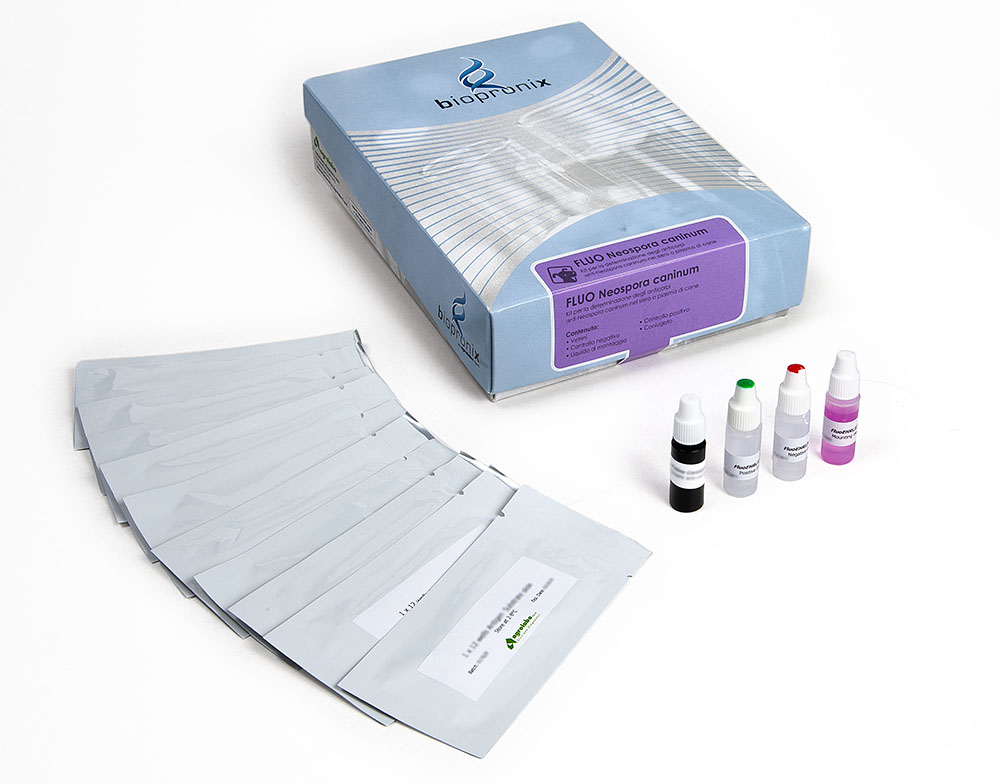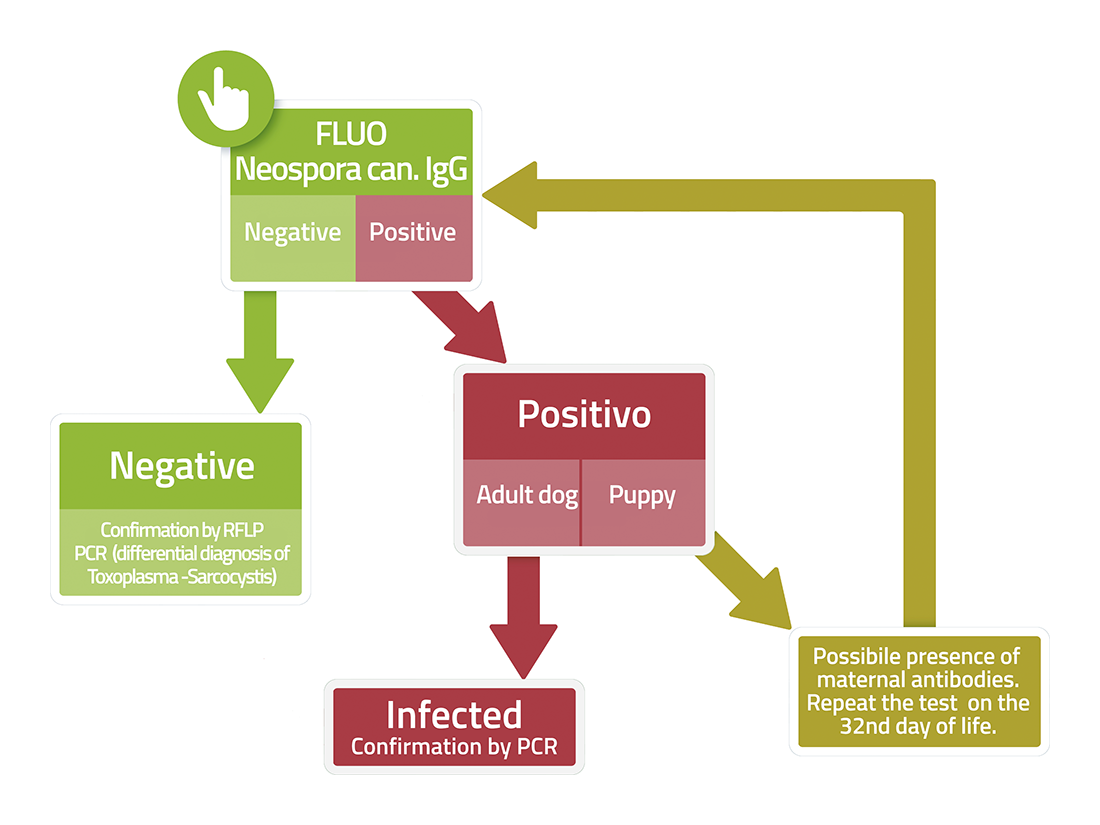FLUO NEOSPORA caninum
IFA kit for the detection of anti-Neospora caninum IgG antibodies
Fluo NEOSPORA caninum is a test based on the immunofluorescence technique for the detection of anti-Neospora caninum IgG antibodies in dog serum or plasma samples.
Neosporosis is a disease caused by Neospora caninum, an obligate intracellular parasitic protozoan of animals.
Until 1988, neosporosis has been confused with toxoplasmosis.
Neosporosis is a well-known abortion disease in cattle, while dogs are known as the definitive host of the parasite, often asymptomatic. However, even the dog can become ill with neosporosis, manifesting serious and sometimes fatal clinical forms. It can also infect coyotes, deer and foxes.
The seroprevalence of clinically healthy dogs is usually well below 20%, but much higher than the prevalence of clinical disease, suggesting the presence of subclinical infections.
Dogs of pure breeds, particularly German Short-haired Pointers, Labrador Retrievers, Boxers, Golden Retrievers, Basset Hounds, and Greyhounds predominate in published case reports. Seroprevalence in canids also varies in relation to the geographical area depending on whether domestic or wild populations are examined, in wild dogs there is a higher prevalence than in proprietary dogs. Dogs fed raw meat and those living on farms rather than in cities are also more affected.
The disease is transmitted through 4 ways:
- Ingestion of raw or undercooked meats
- Tachyzoites passage through the placenta
- Ingestion of foods contaminated with sporulated oocysts
- Passage of the placenta affecting the puppies.
The disease manifests itself with symptoms similar to toxplasmosis but neurological deficits and muscle forms predominate. Symptoms differ between puppies less than 6 months of age and adult dogs.
Puppies
The signs appear between 3 and 9 weeks of age. Ascending paralysis of the limbs, atrophy and gradual muscle stiffness are noted (pelvic limbs are more affected than thoracic limbs). This arthrogryposis is the result of the formation of muscle scar lesions.
Also occur:
- cervical weakness
- dysphagia
- megaesophagus
- death
.
Dogs over 6 months old
Adult dogs are very likely to get sick due to the reactivation of a chronic subclinical infection.
In adults, neurological signs from multifocal CNS lesions and inflammatory myopathies may be noted. In these cases, the differential diagnosis with other inflammatory myopathies such as Hepatozoonosis, leishmaniasis, trichinellosis, sarcocystosis, microfilaremia, leptospirosis, clostridial myositis and ehrlichiosis is required.
Atypical symptoms are also reported: cough; cerebellar atrophy ataxia; dysphagia; nodular and/or ulcerative dermatitis; pneumonia; hepatitis; megaesophagus associated with esophageal myositis. The most serious development involves the myocardium, with lethal consequences.

